So here I have come to the end of my occasional series. I started with the silent era treating it as a single decade, most unfair, and the decade by decade I have laid out what I think are the two SF films that influence the genre and movies in general. With the years 2000-2009, there are no more complete decades to review. I honestly thought that this would be one of the hardest because it is the most recent. Sometimes,m it can be very tricky seeing the lasting influence amid the noise of fads, but surprisingly I found it easy to make my selections.
 X-Men (2000) My first pick popped out right at the start of the decade, Byran Singer’s superhero film, X-Men. Awash in superhero movies it can be hard for a modern viewer to appreciate just what a groundbreaking movie this was. Before X-Men superhero movies always operated in a world of camp and with winks towards the camera letting the audience know not to take the subject too seriously. And while films like Superman: The Movie and Tim Burton’s Batman made big box office, they remained in that slightly campy quarantine. X-Men, from it’s gritty start amid the Holocaust through it’s epic finale grounded itself in realism, treating the subject and inviting the audience to treat the subject, seriously. These were real characters with real motivation talking about real human conditions, but using the fantastic as their vehicle. Without this movie both in its style and in its success, it is unlikely we would be in our current riches with both the Marvel and DC cinematic Universes.
X-Men (2000) My first pick popped out right at the start of the decade, Byran Singer’s superhero film, X-Men. Awash in superhero movies it can be hard for a modern viewer to appreciate just what a groundbreaking movie this was. Before X-Men superhero movies always operated in a world of camp and with winks towards the camera letting the audience know not to take the subject too seriously. And while films like Superman: The Movie and Tim Burton’s Batman made big box office, they remained in that slightly campy quarantine. X-Men, from it’s gritty start amid the Holocaust through it’s epic finale grounded itself in realism, treating the subject and inviting the audience to treat the subject, seriously. These were real characters with real motivation talking about real human conditions, but using the fantastic as their vehicle. Without this movie both in its style and in its success, it is unlikely we would be in our current riches with both the Marvel and DC cinematic Universes.
 Sky Captain and the World of Tomorrow. (2004) Set in an alternate history where Zepplin travel remained popular and pulp heroes battled mad scientists Sky Captain was a wild ride that never quite found success at the box office, but like another of my picks, Blade Runner, its influence it outsized to its ticket sales. This film pioneered for feature films the wide scale use of virtual sets. Of course Lucas was doing this already with his Star Wars prequel movies, but I do not think Lucas, with his endless piles of cash and reputation for being a technophile, produced the impact that Sky Captain did. By making this film with a modest budget, Kerry Conran illustrated that these techniques were available to all sorts of production that did not have ILM behind them. It also did not hurt that Conran shot Sky Captain with flair and style, making a film that had a distinct look over the flat perfect seen in Lucas’ Star Wars prequels.
Sky Captain and the World of Tomorrow. (2004) Set in an alternate history where Zepplin travel remained popular and pulp heroes battled mad scientists Sky Captain was a wild ride that never quite found success at the box office, but like another of my picks, Blade Runner, its influence it outsized to its ticket sales. This film pioneered for feature films the wide scale use of virtual sets. Of course Lucas was doing this already with his Star Wars prequel movies, but I do not think Lucas, with his endless piles of cash and reputation for being a technophile, produced the impact that Sky Captain did. By making this film with a modest budget, Kerry Conran illustrated that these techniques were available to all sorts of production that did not have ILM behind them. It also did not hurt that Conran shot Sky Captain with flair and style, making a film that had a distinct look over the flat perfect seen in Lucas’ Star Wars prequels.


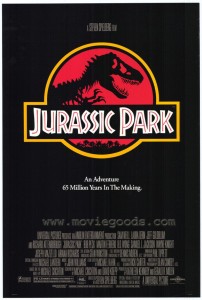
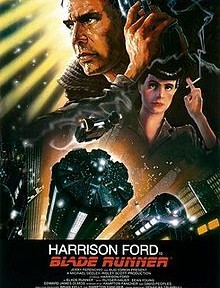
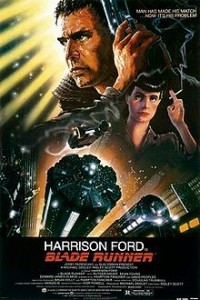
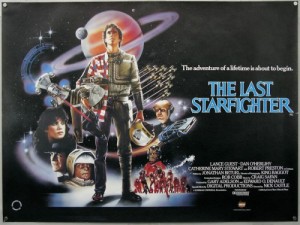
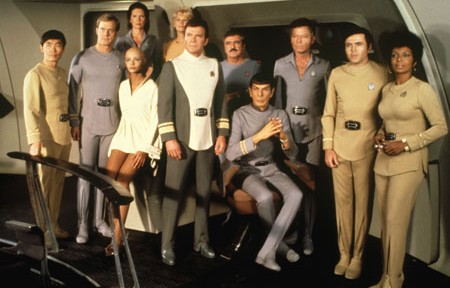
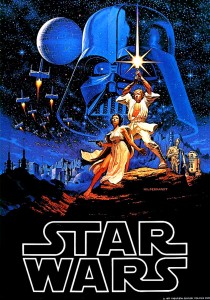
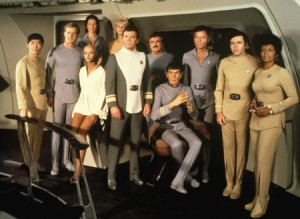 Star Trek: the Motion Picture (1979)
Star Trek: the Motion Picture (1979)
 Stanley Kubrick’s brilliant and baffling masterpiece, 2001 is truly not only one of the most influential SF films of the 1960s, it is one of the most influential films of any genre of all time. It is groundbreaking in its style, scope, depth of concepts, technical mastery, and sheer artistry. Coming at the end of the decade, this movie raised the bar on what could be expected of a science-fiction film. Where Forbidden Planet brought in literature, 2001 demonstrated that SF, the genre of ideas in print fore decades and decades, could also be the genre of ideas on the silvered screen. Eschewing a traditional plot driven narrative, this film took us from the dawn of humanity through its eventual evolution beyond the cradle of Earth. It did this will a level of technical competence that forever changed what would be expected of a major SF film and set the stage for the dazzling spectacle in the next decade of Star Wars.
Stanley Kubrick’s brilliant and baffling masterpiece, 2001 is truly not only one of the most influential SF films of the 1960s, it is one of the most influential films of any genre of all time. It is groundbreaking in its style, scope, depth of concepts, technical mastery, and sheer artistry. Coming at the end of the decade, this movie raised the bar on what could be expected of a science-fiction film. Where Forbidden Planet brought in literature, 2001 demonstrated that SF, the genre of ideas in print fore decades and decades, could also be the genre of ideas on the silvered screen. Eschewing a traditional plot driven narrative, this film took us from the dawn of humanity through its eventual evolution beyond the cradle of Earth. It did this will a level of technical competence that forever changed what would be expected of a major SF film and set the stage for the dazzling spectacle in the next decade of Star Wars. film! Yes it is both of those things, a horror film, just as Frankenstein was a horror film, and it is not just a zombie movie it is the progenitor of all modern zombie movies. It is also, quite clearly, a science-fiction film. First off, co-writer and Direct George A. Romero has mentioned in interviews that the inspiration for this film was Richard Matheson’s novel, I am Legend, a story about a world overrun by scientifically explained vampires. In the film Night of the Living Dead, quite unlike Romero’s other zombie films, there is a clear explanation given for the rise of the dead and their transformation into murderous cannibals – radiation from the Venus probe. This radiation is what ‘activates’ the ghouls’ brains (the term zombie is never used in the movie and was grafted onto these revenants later) and it is what destroyed the brain destroys the ghouls. The cause and explanation is grounded in a scientific reason, though it is terrible science. So, like Dr. No, this is a movie that one rarely thinks of as SF, but clearly falls within those borders.
film! Yes it is both of those things, a horror film, just as Frankenstein was a horror film, and it is not just a zombie movie it is the progenitor of all modern zombie movies. It is also, quite clearly, a science-fiction film. First off, co-writer and Direct George A. Romero has mentioned in interviews that the inspiration for this film was Richard Matheson’s novel, I am Legend, a story about a world overrun by scientifically explained vampires. In the film Night of the Living Dead, quite unlike Romero’s other zombie films, there is a clear explanation given for the rise of the dead and their transformation into murderous cannibals – radiation from the Venus probe. This radiation is what ‘activates’ the ghouls’ brains (the term zombie is never used in the movie and was grafted onto these revenants later) and it is what destroyed the brain destroys the ghouls. The cause and explanation is grounded in a scientific reason, though it is terrible science. So, like Dr. No, this is a movie that one rarely thinks of as SF, but clearly falls within those borders.
 Those who know me might suspect I selected this film because of the close association with one of my favorite SF authors, Robert A. Heinlien, but they would be wrong. This film, as a movie, is in my opinion flawed, but I am not selecting for best SF movies in each decade but most influential and on that count there can be no arguing with Destination Moon. This film, released in 1950, was a box office hit, both domestically and over-seas. It launched George Pal into his love affair with SF film, and for that alone it is an important film but it also launched the SF film crazed of the 1950’s. Without this film we do not have the rich fertile treasury of SF films from this decade and without those movies we do not have modern SF cinema. Destination Moon, while dry and flawed, is one of the most important SF films of any decade.
Those who know me might suspect I selected this film because of the close association with one of my favorite SF authors, Robert A. Heinlien, but they would be wrong. This film, as a movie, is in my opinion flawed, but I am not selecting for best SF movies in each decade but most influential and on that count there can be no arguing with Destination Moon. This film, released in 1950, was a box office hit, both domestically and over-seas. It launched George Pal into his love affair with SF film, and for that alone it is an important film but it also launched the SF film crazed of the 1950’s. Without this film we do not have the rich fertile treasury of SF films from this decade and without those movies we do not have modern SF cinema. Destination Moon, while dry and flawed, is one of the most important SF films of any decade.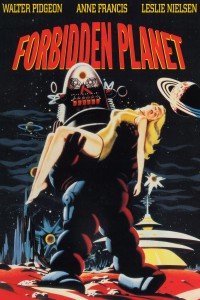 This selection should be less surprising. It is a well know movie, beloved and rescreened often. I had the good fortune to catch it in a theater and the special effect and images still hold up quite nicely. The characters are quite a bit dated, very much the writing is a product of the repressed 50’s, with the Production Code still in full effect, but this is still a movie well worth watching. It is influential because until Forbidden Planet science-fiction films were not literature. Most SF films were heavily plot based, being either adventure stories, such as Destination Moon’s exploration of the adventure inherent in a trip to the moon, allegorical story, or arguments for a particular worldview, such as The Day the Earth Stood Still. Forbidden Planet, an SF adaptation of The Tempest took the SF movie, with credible science, beyond the solar system and into the soul of humanity. It asked, with typical MGM glitz, deep questions about revenge and power and to price might they extract. In addition to opening up SF film to deeply internal stories, though they might be about aliens and robots on the surface, Forbidden Planet also inspired Gene Roddenberry’s Star Trek. The production design of the movie strongly influenced the look of the television series, and the very concept of a paramilitary exploration of new worlds and new life-forms start here. There is no doubt that you can draw a line from Forbidden Planet, through Star Trek, to many shows and films today.
This selection should be less surprising. It is a well know movie, beloved and rescreened often. I had the good fortune to catch it in a theater and the special effect and images still hold up quite nicely. The characters are quite a bit dated, very much the writing is a product of the repressed 50’s, with the Production Code still in full effect, but this is still a movie well worth watching. It is influential because until Forbidden Planet science-fiction films were not literature. Most SF films were heavily plot based, being either adventure stories, such as Destination Moon’s exploration of the adventure inherent in a trip to the moon, allegorical story, or arguments for a particular worldview, such as The Day the Earth Stood Still. Forbidden Planet, an SF adaptation of The Tempest took the SF movie, with credible science, beyond the solar system and into the soul of humanity. It asked, with typical MGM glitz, deep questions about revenge and power and to price might they extract. In addition to opening up SF film to deeply internal stories, though they might be about aliens and robots on the surface, Forbidden Planet also inspired Gene Roddenberry’s Star Trek. The production design of the movie strongly influenced the look of the television series, and the very concept of a paramilitary exploration of new worlds and new life-forms start here. There is no doubt that you can draw a line from Forbidden Planet, through Star Trek, to many shows and films today.
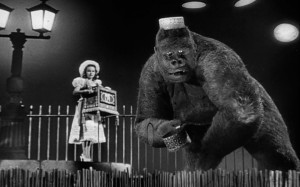 My selection is 1949’s Might Joe Young. It has been called, and rightly so in my opinion, a King Kong knock-off. It is the story of a young woman and her pet 12 foot tall gorilla. They are brought out of the wilds of Africa to the wilds of Hollywood as entertainment for a nightclub. The ape goes mad, there is destruction and terror in the streets of Los Angeles. All in all not a terribly original story line, it features one of the stars of the original King Kong, a truly influential film, and the special effects were headed up by Willis O’Brien, the technical wizard who did the effects for Kong.
My selection is 1949’s Might Joe Young. It has been called, and rightly so in my opinion, a King Kong knock-off. It is the story of a young woman and her pet 12 foot tall gorilla. They are brought out of the wilds of Africa to the wilds of Hollywood as entertainment for a nightclub. The ape goes mad, there is destruction and terror in the streets of Los Angeles. All in all not a terribly original story line, it features one of the stars of the original King Kong, a truly influential film, and the special effects were headed up by Willis O’Brien, the technical wizard who did the effects for Kong.
 Frankenstein – 1931 – James Whale
Frankenstein – 1931 – James Whale
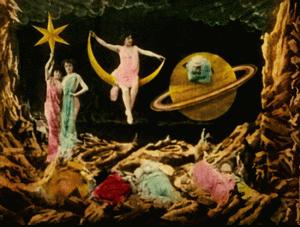 A trip to the Moon (Le voyage dans la lune) – 1902 – George Melies
A trip to the Moon (Le voyage dans la lune) – 1902 – George Melies Metropolis – 1927 – Fritz Lang
Metropolis – 1927 – Fritz Lang